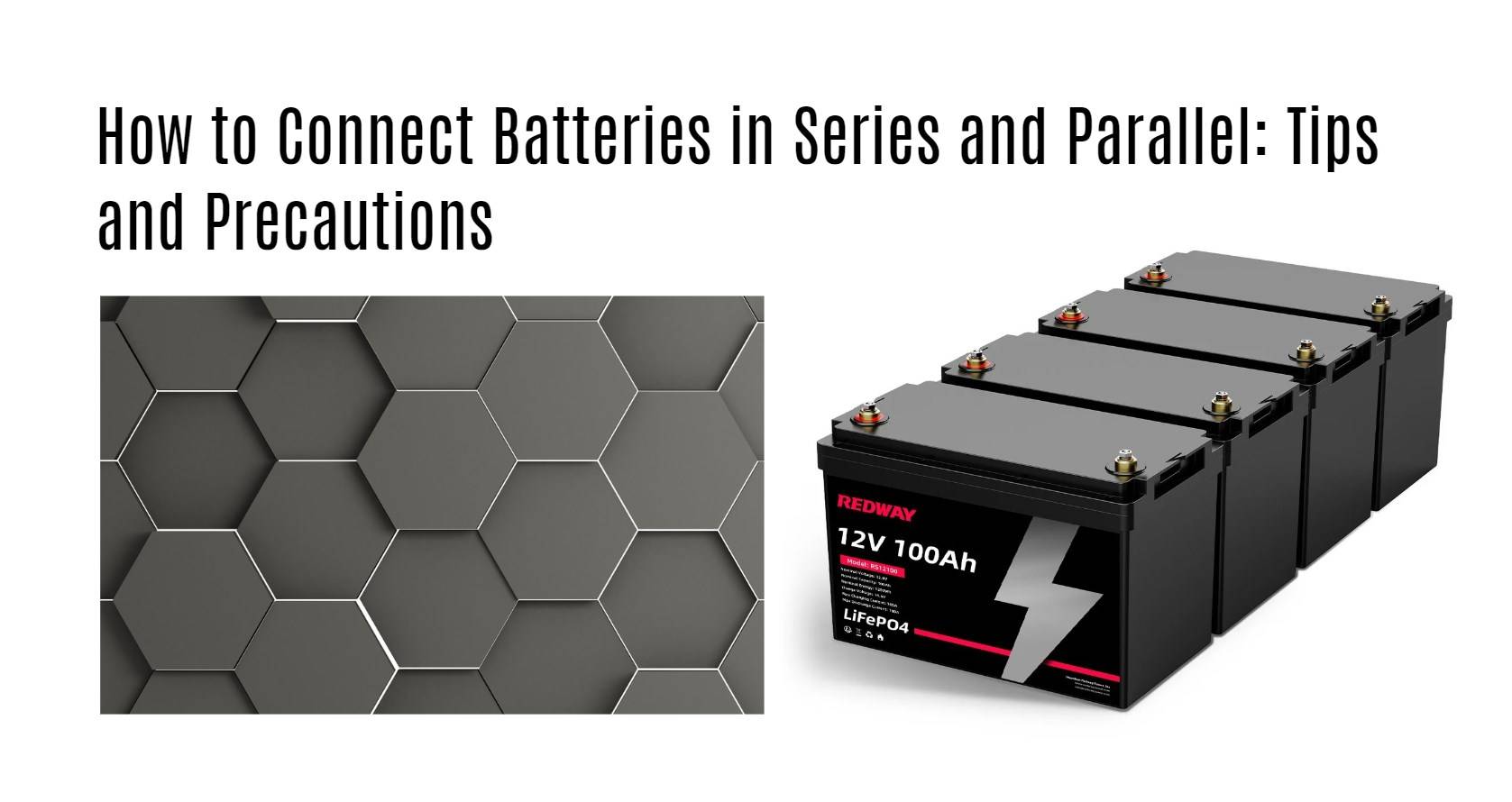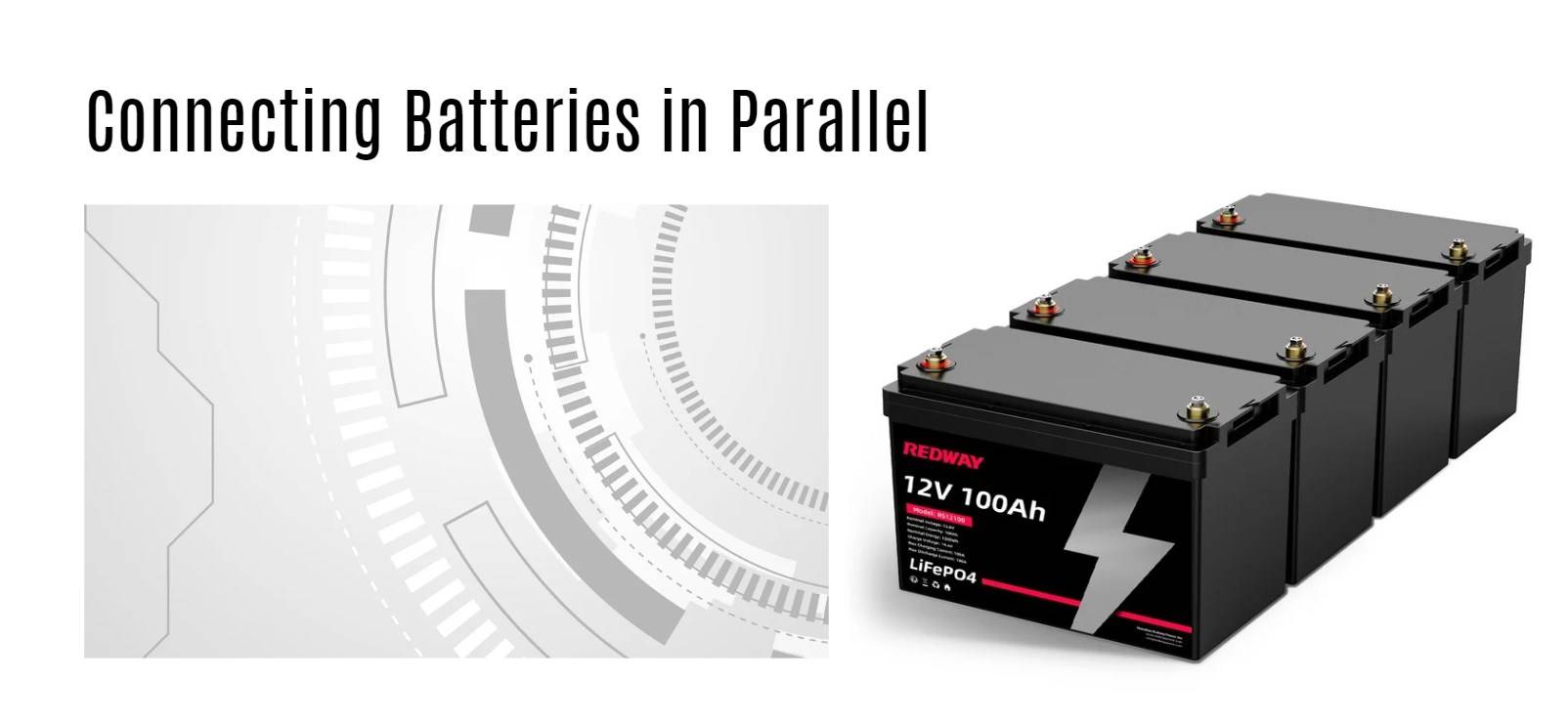Understanding the intricacies of connecting batteries is crucial for optimizing your power systems, whether for industrial, commercial, or personal applications. Proper configuration can significantly enhance the voltage or amp-hour capacity, catering to various high-voltage and power-demanding applications. This guide delves into the methodologies for connecting batteries in series, parallel, and series-parallel configurations.
Connecting Batteries in Series
Connecting batteries in series involves linking two or more batteries to increase the overall voltage of the system. However, it’s essential to note that this configuration does not increase the capacity (amp-hour rating) of the system.
Methodology
- Voltage and Capacity Matching: Ensure each battery has the same voltage and capacity rating. Discrepancies can lead to battery damage.
- Connection Steps:
- Connect the negative terminal of the first battery to the positive terminal of the second battery.
- Continue this pattern until all batteries are connected in a single chain.
- Attach a cable from the negative terminal of the first battery to your application.
- Similarly, connect the positive terminal of the last battery to your application.
Example
For instance, connecting four 12V 26Ah batteries in series will result in a system with a voltage of 48V and a capacity of 26Ah.
Charging Considerations
When charging batteries in series, the charger must match the total system voltage. Charging each battery individually is recommended to avoid imbalance.
Connecting Batteries in Parallel
Parallel connections are used to increase the amp-hour capacity of the system while maintaining the same voltage. This setup is ideal for applications requiring extended duration of power supply.
Methodology
- Voltage Consistency: Ensure all batteries have the same voltage. Ideally, they should also have the same capacity for optimal performance.
- Connection Steps:
- Connect the negative terminals of all batteries together.
- Connect the positive terminals of all batteries together.
Example
Connecting four 12V 100Ah batteries in parallel will result in a system with a voltage of 12V and a capacity of 400Ah.
Charging Considerations
Parallel configurations can be charged faster due to increased capacity. Ensure the charging current is distributed evenly to avoid overloading any single battery.
Series-Parallel Connection
Series-parallel connections combine the benefits of both series and parallel configurations, increasing both voltage and capacity.
Methodology
- Series Strings: Create multiple strings of batteries connected in series.
- Parallel Groups: Connect these series strings in parallel.
Example
Connecting six 6V 100Ah batteries in a series-parallel configuration can create a 12V 300Ah system by arranging three pairs of series-connected batteries in parallel.
Best Practices and Considerations
- Battery Uniformity: Always use batteries with matching specifications to avoid damage and inefficiency.
- Connection Integrity: Ensure all connections are secure and use appropriate cables to handle the expected current load.
- Regular Maintenance: Regularly check and maintain connections and battery health to prolong system life and efficiency.
Conclusion
Proper battery configuration is critical for optimizing your power systems. Whether increasing voltage, capacity, or both, understanding and correctly implementing series, parallel, and series-parallel connections will enhance your power supply’s efficiency and longevity. For specialized applications, consulting with experts can provide tailored solutions to meet specific requirements.




